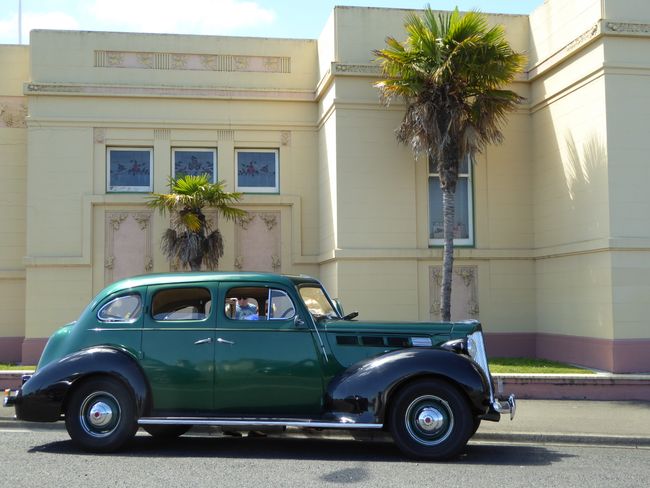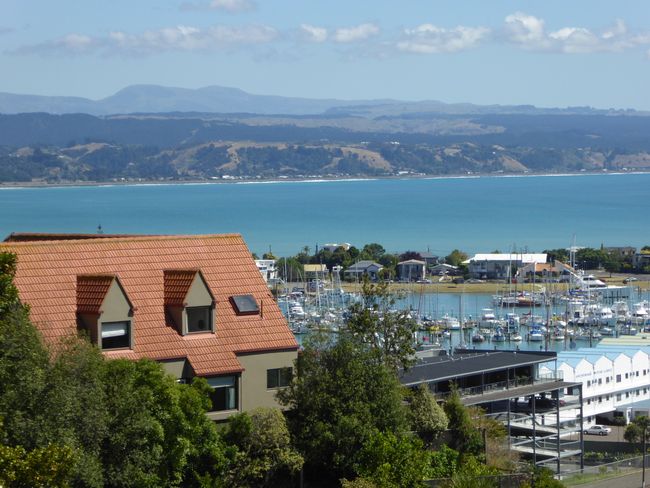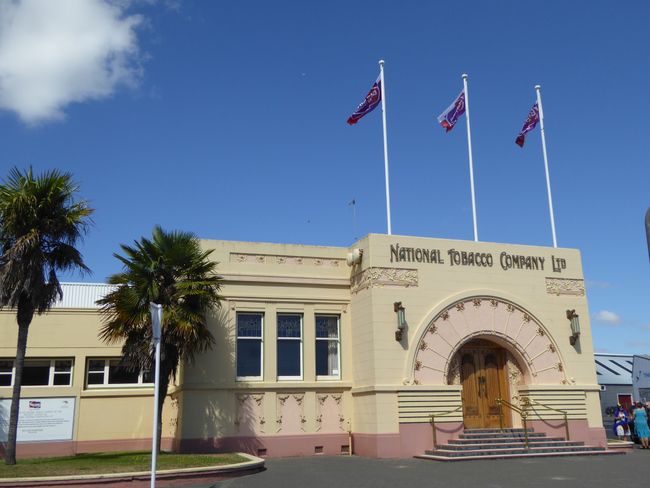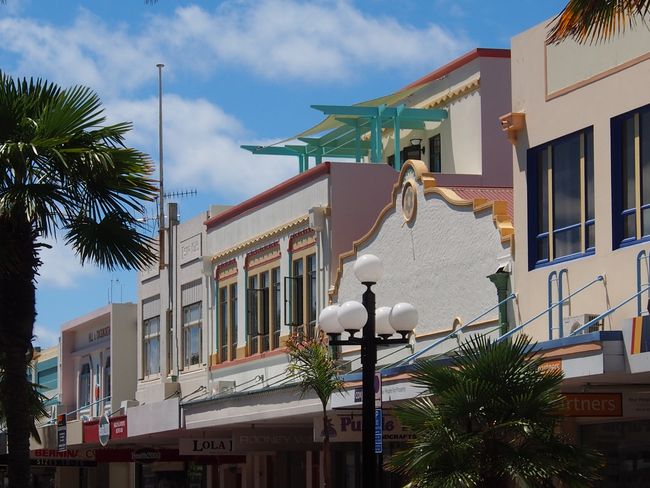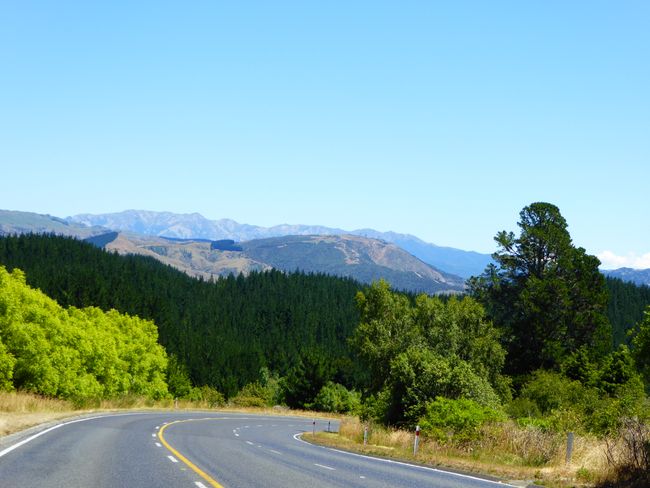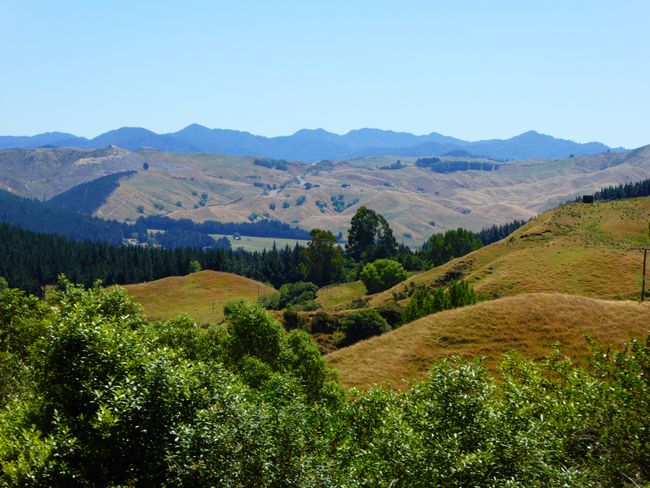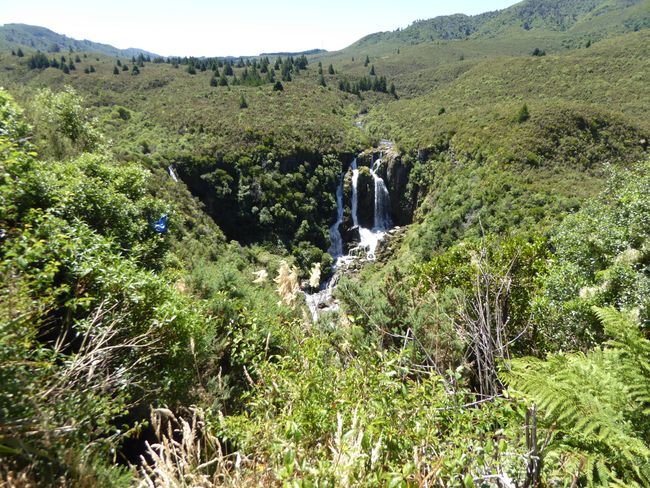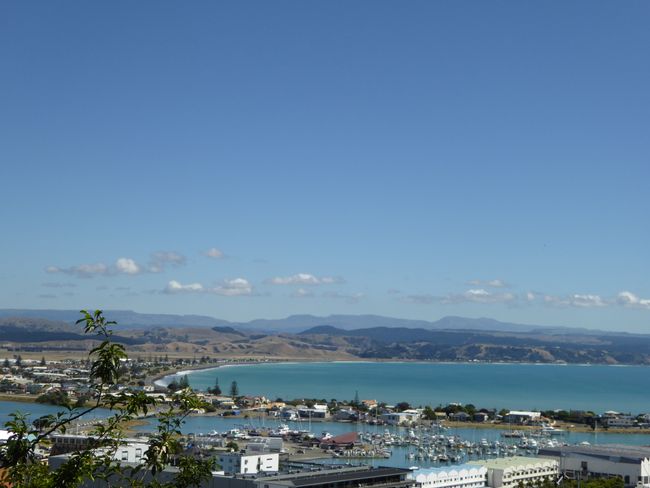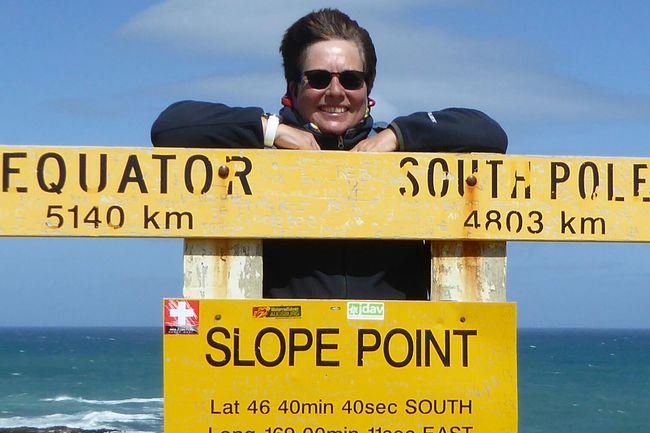
Neuseeland: 8000km solo durch das schönste Ende der Welt
vakantio.de/8000km_durch_neuseeland
Day 42 - From Napier to Taupo
Publicēts: 09.08.2019
Abonējiet biļetenu
25.01.2015
Since I don't have any groceries, it remains with an instant coffee in front of my room in the morning sun. I load up my car and drive back to Napier at 10:00 am. In my Dumont travel guide, there was something about two neighborhoods, Marewa and the oldest neighborhood at the harbor. On the map I find a Marewa Park and drive there. Indeed, there are many Art Deco houses, entire neighborhoods and individual beautiful houses here.
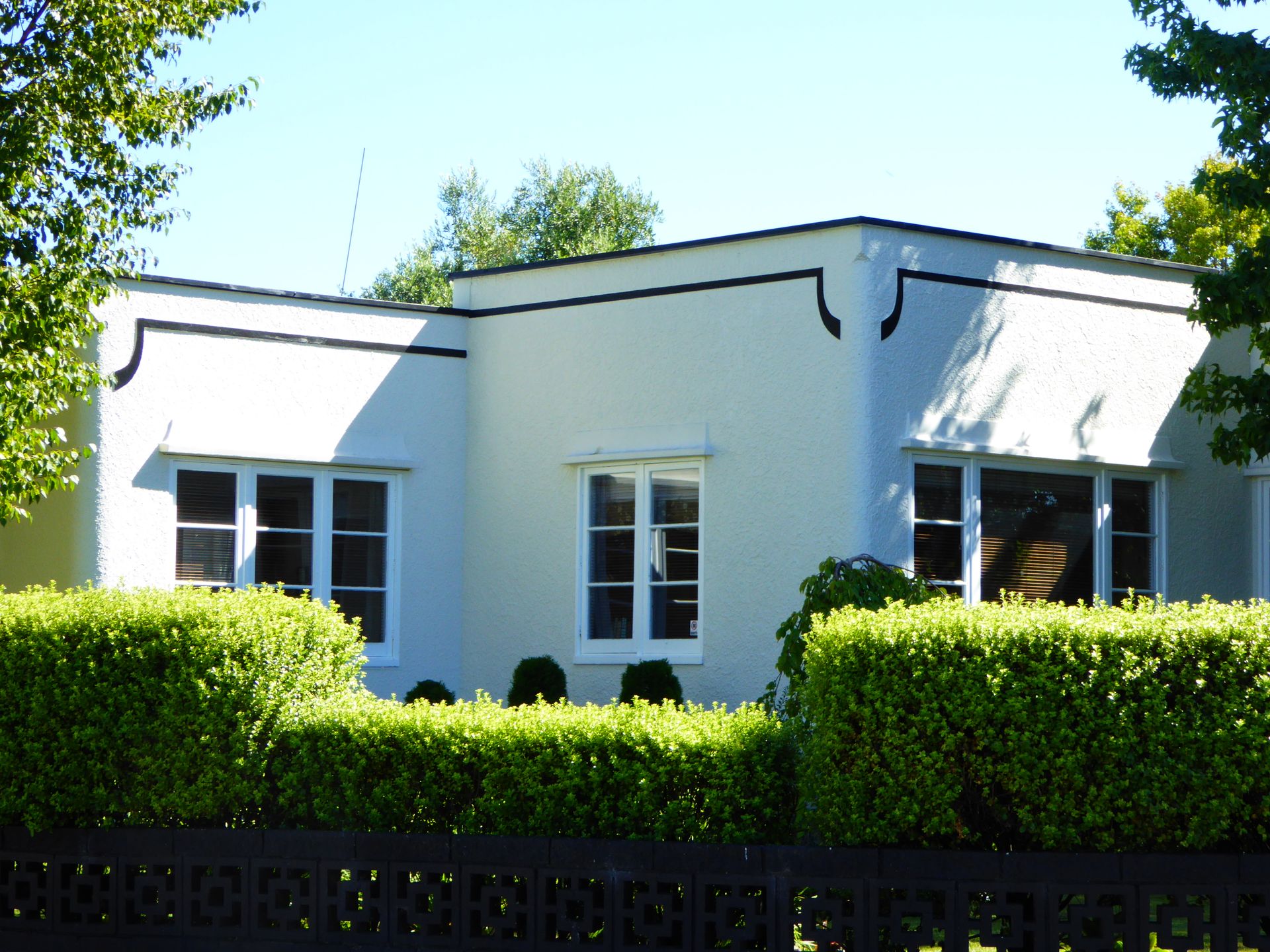
Art Deco in Napier (Marewa district)
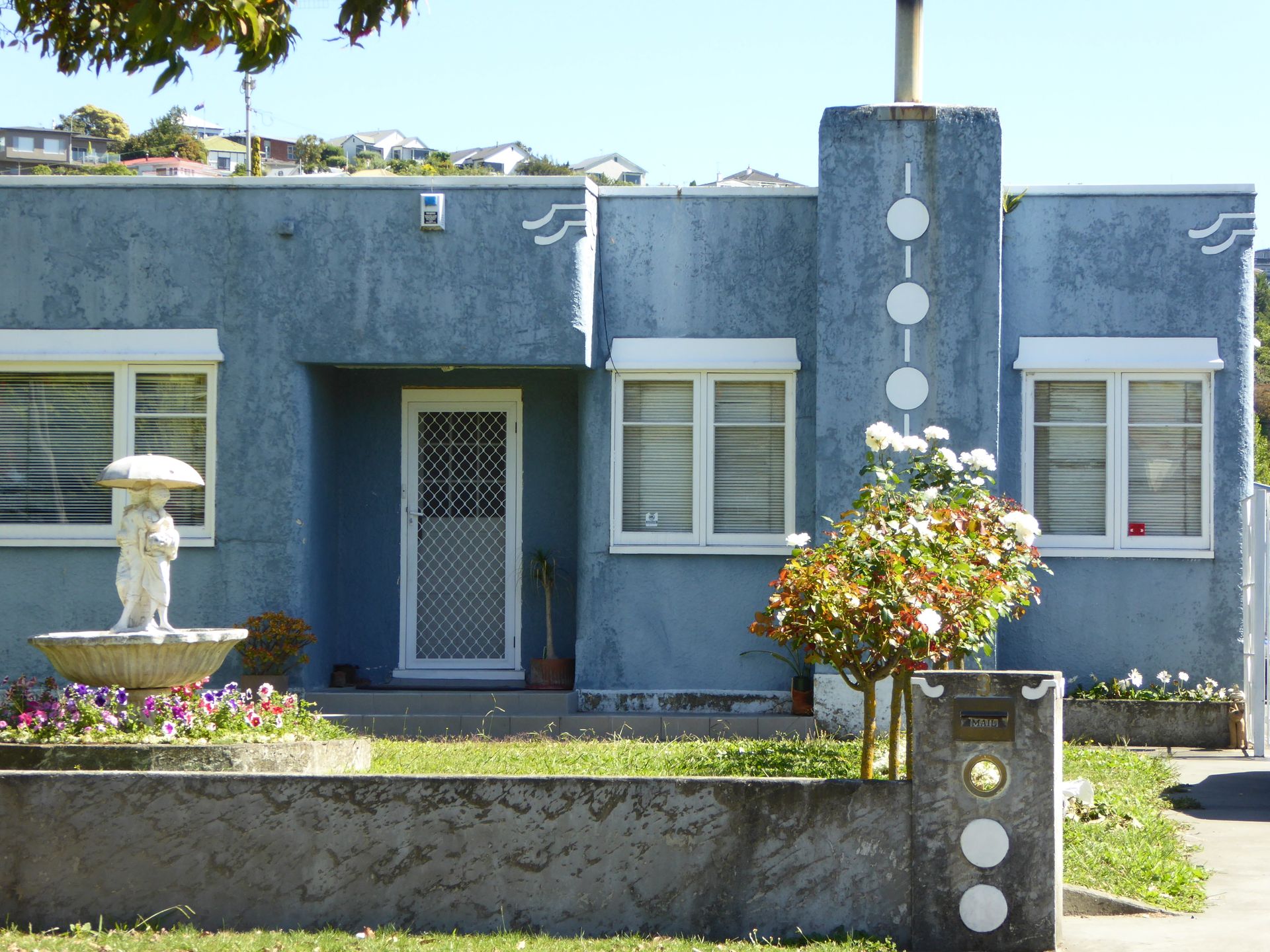
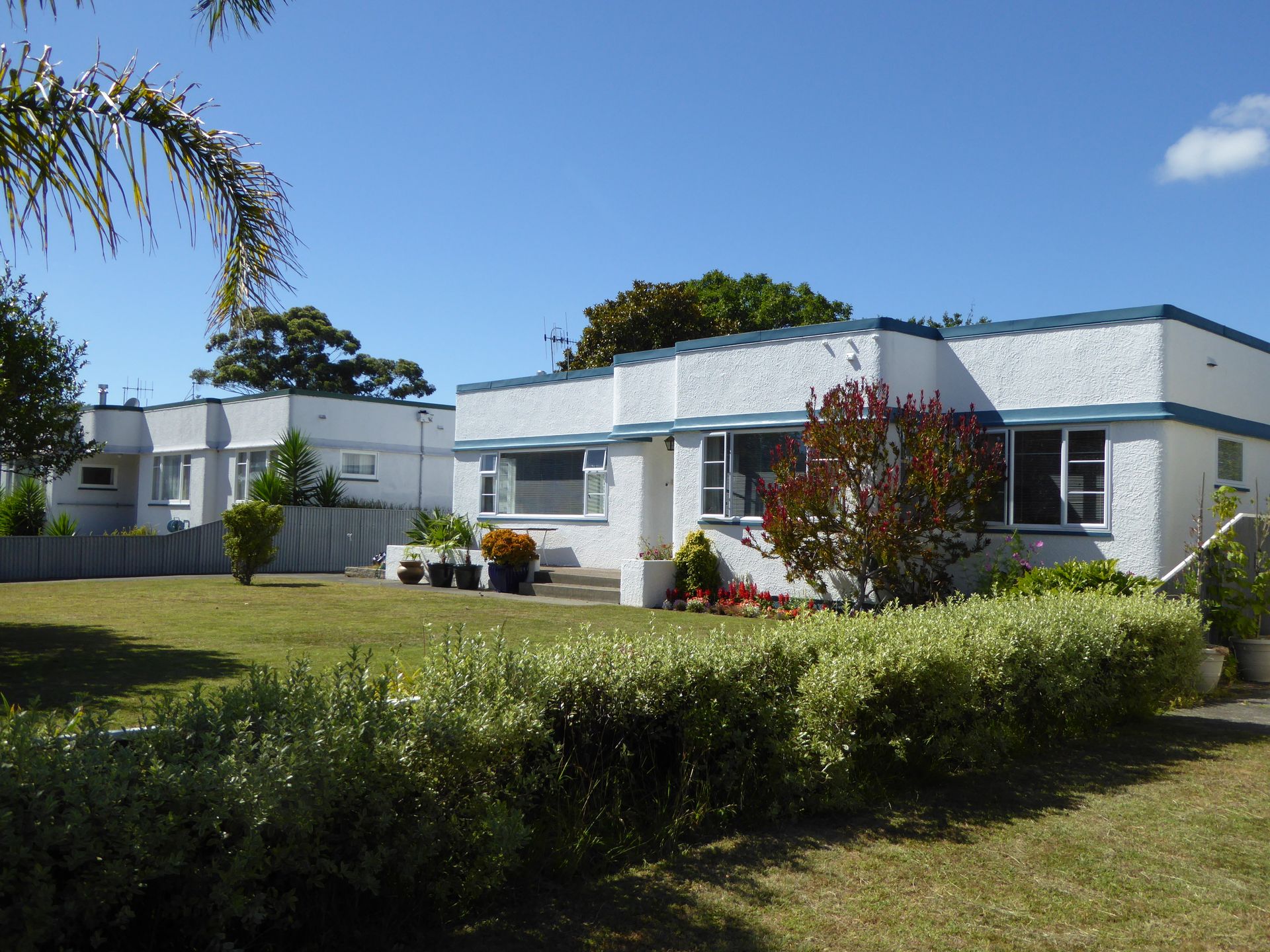
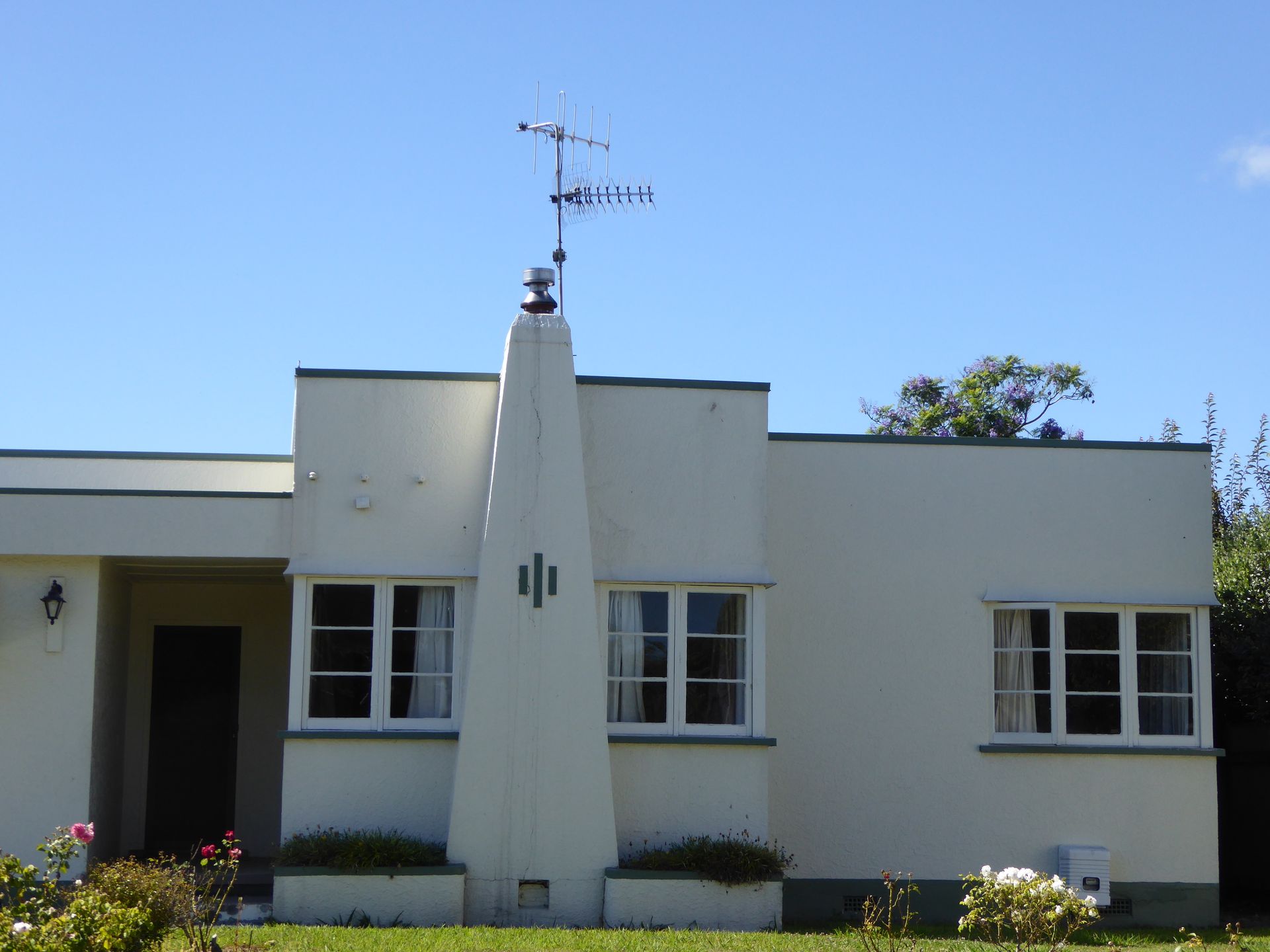
I drive to the harbor, find a restaurant in a side street called Smith's where many people are sitting outside at wooden tables having breakfast. I sit down too and the service is completely sluggish. After half an hour, I am finally allowed to order my breakfast, the coffee takes another 20 minutes and since I only ordered two slices of toast with fried eggs, I'm quite annoyed and quickly leave the place. I drive to the Marine Parade, the road that runs along the Pacific. Here are many beautiful parks and Pania of the Reef sits here too.
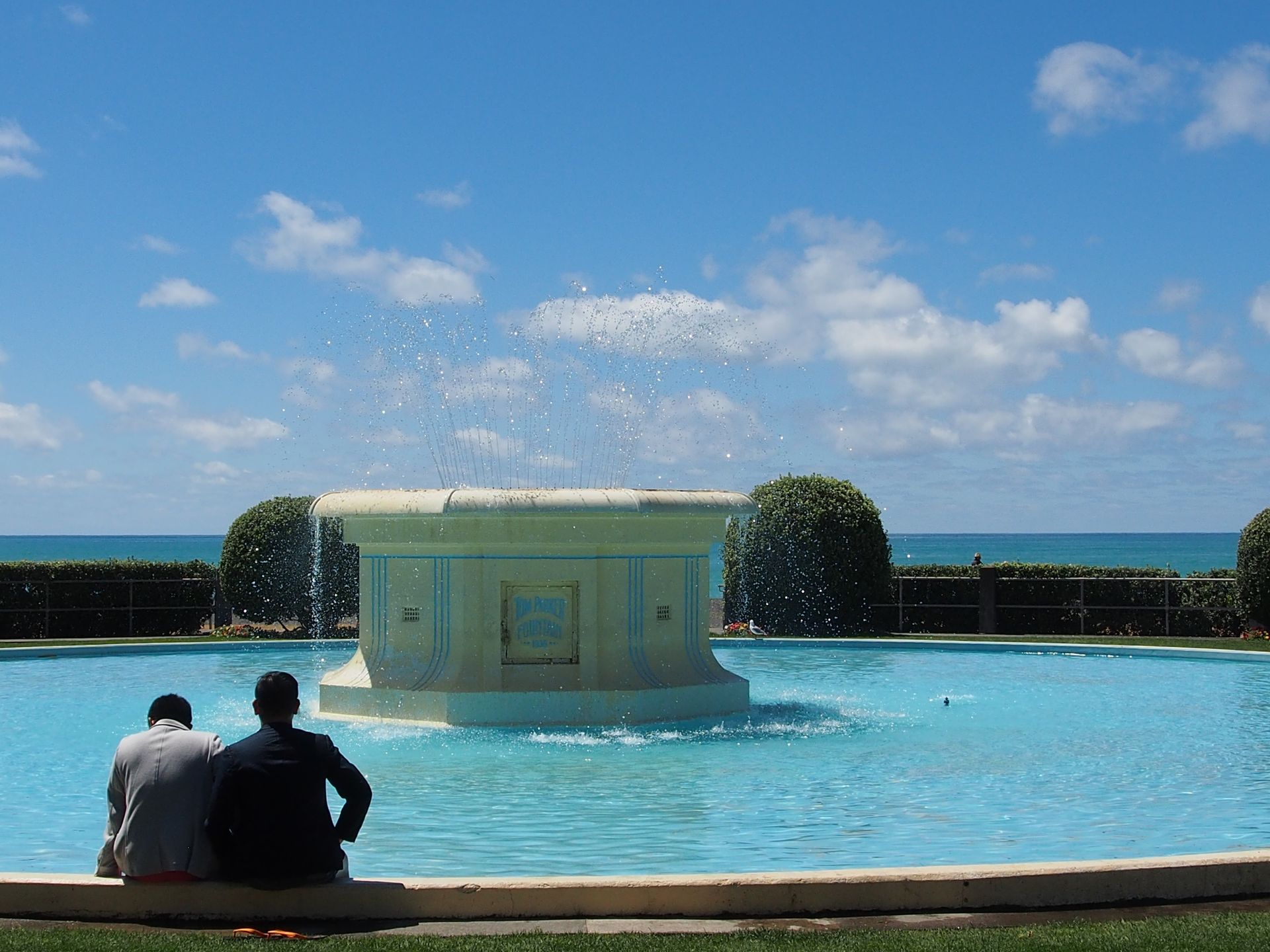
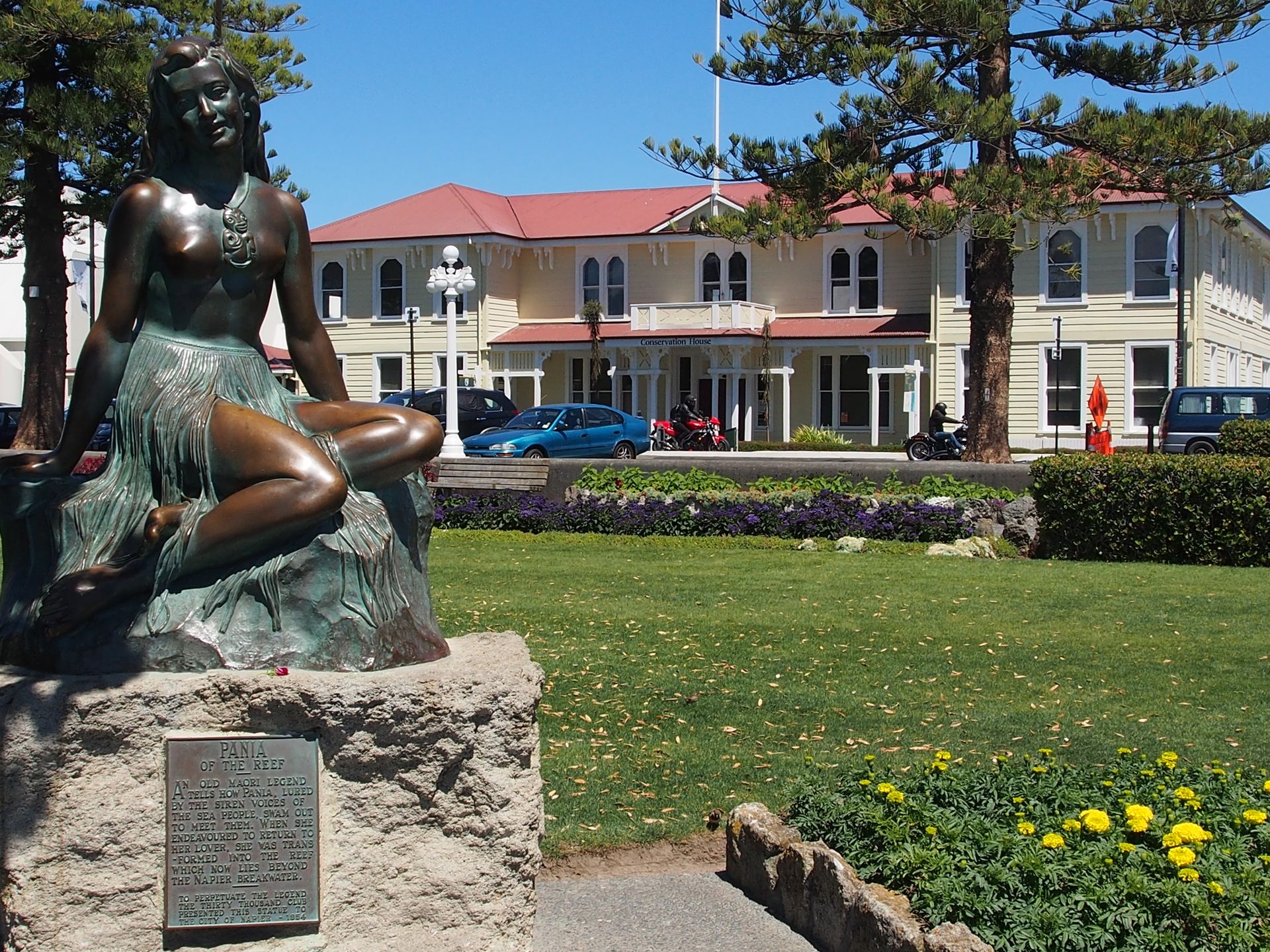
Pania of the Reef
A kind of little mermaid from New Zealand. She is surrounded by a Maori legend that a Maori boy fell in love with Pania, who came ashore at night. Because his friends did not believe that he had eventually married Pania, they persuaded him that he had to prove it. An elderly Maori recommended that he should make her unconscious by secretly feeding her cooked food so that she would stay on land and not disappear into the sea at sunrise. Pania woke up during this attack, got scared and fled into the sea and was never seen again. It is said that she is now a reef off the coast and can no longer come ashore. Pania of the Reef...
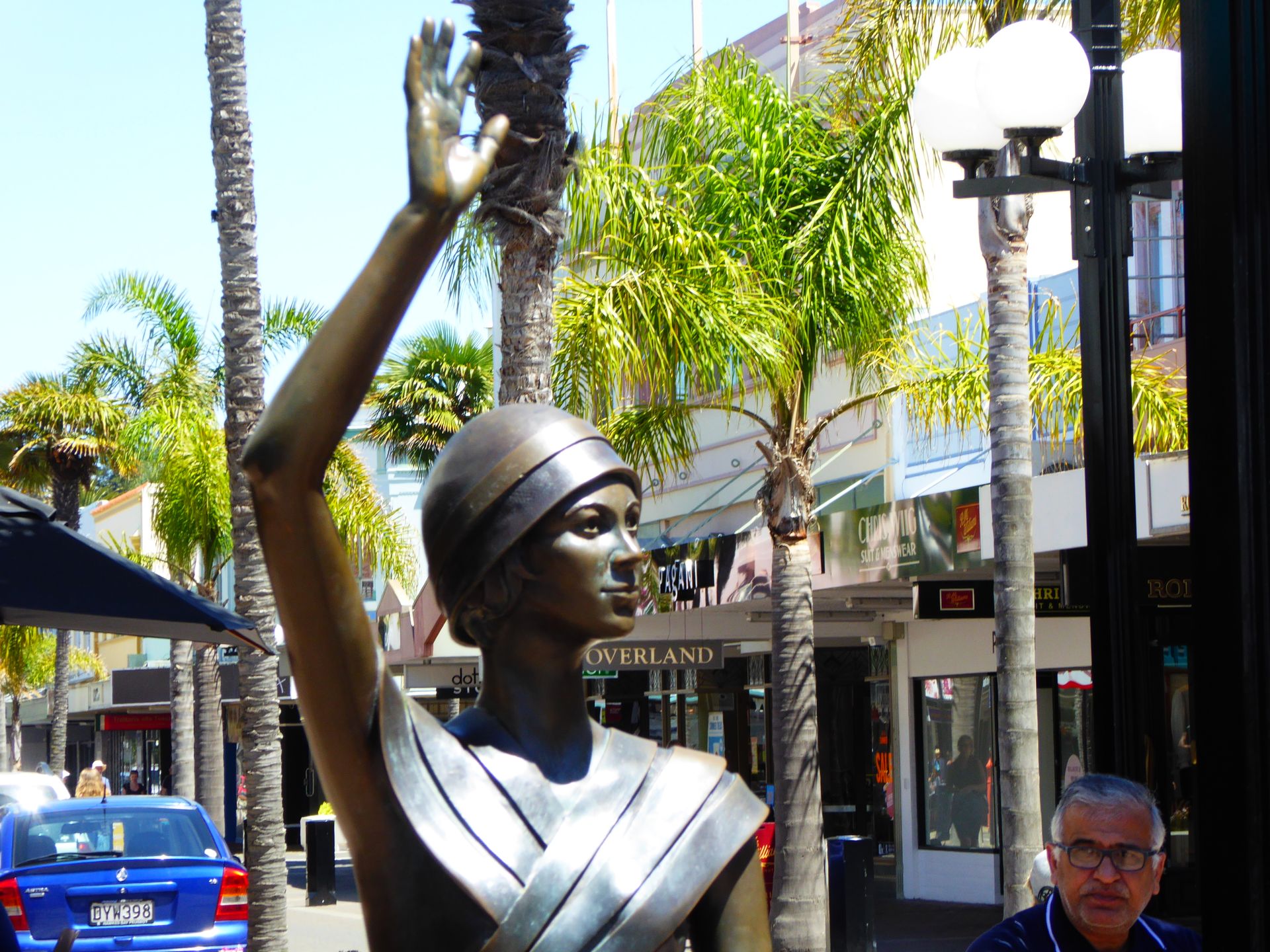
The sun is shining and I am somewhat reconciled with Napier because this morning there is quite a lot going on. More tourists, but many shops are also open and I park my car again for half an hour and walk along Tennyson Street. There are many Art Deco houses here with shops and cafes on the ground floors. Instead of turning this street into a pedestrian zone, they have only implemented it half-heartedly, and a single lane road winds through it, so that when you sit outside the cafes, you always have cars in front of you. In a shop, I see a small trolley that only weighs 1.9 kg and I take it with me. I need such a 1-2 night suitcase at home anyway, which is lightweight, and I think that this thing can hold more than my backpack, so that I can expand my hand luggage a bit.
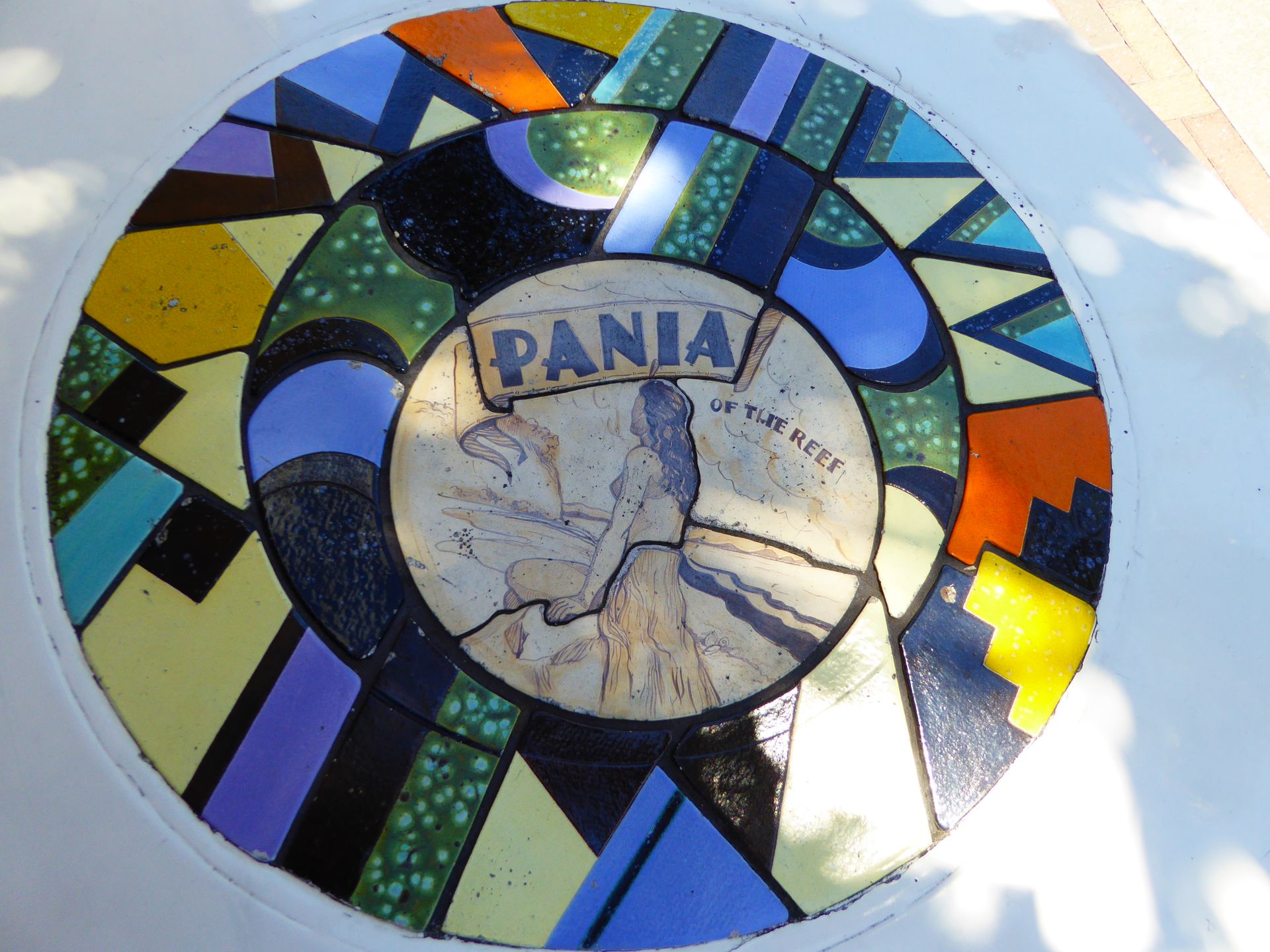
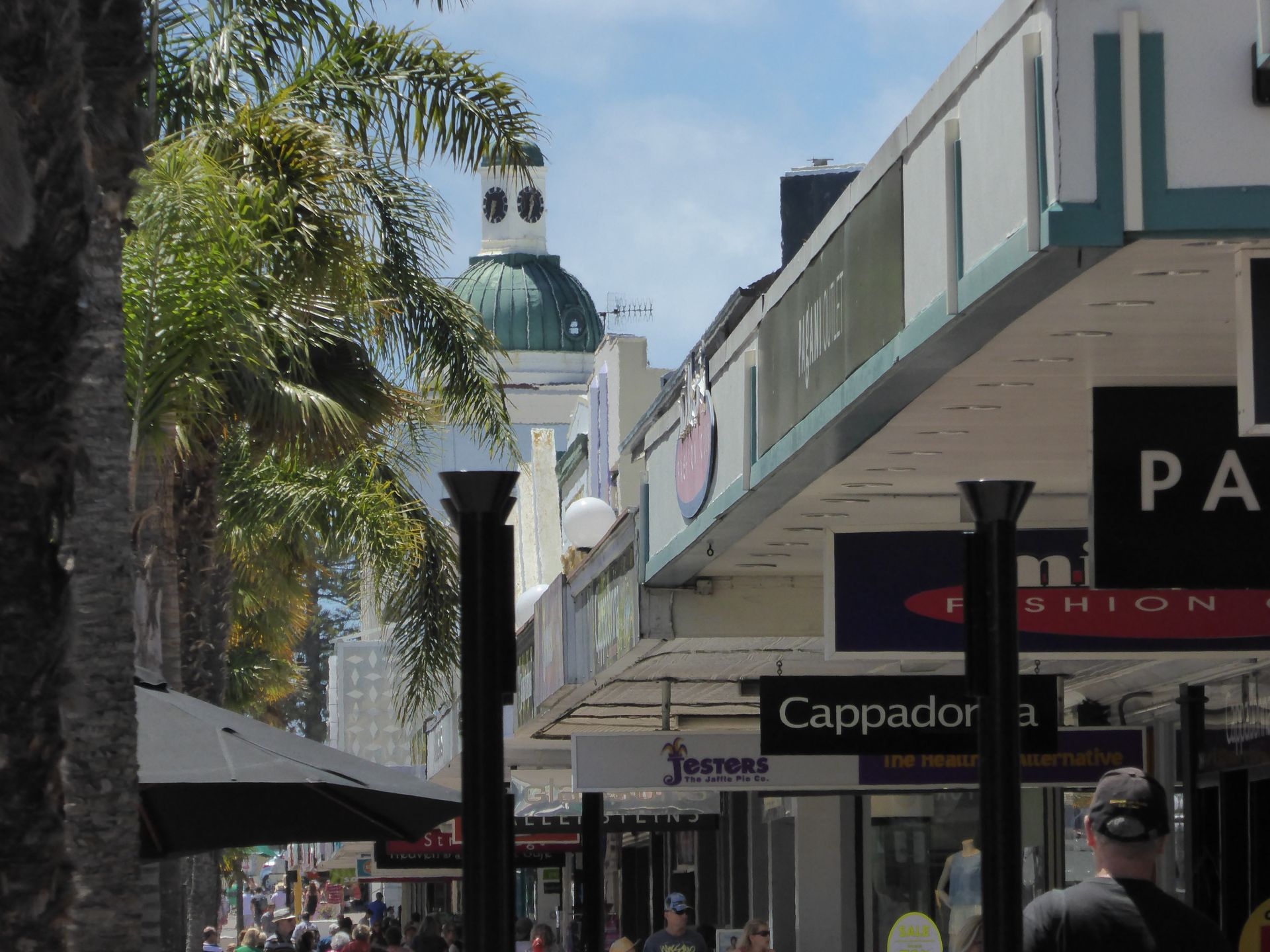
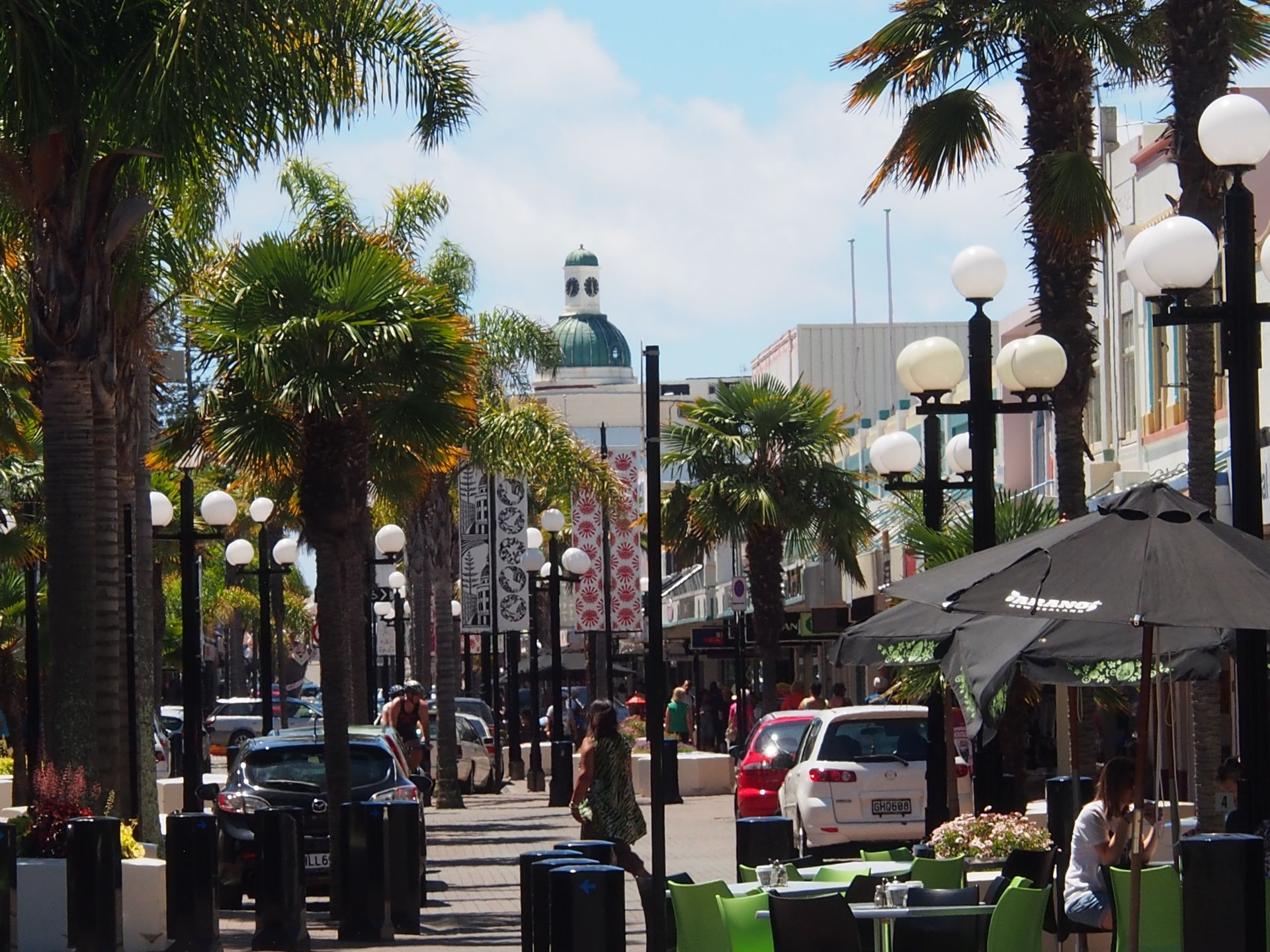
I leave around 1:00 pm and it's already around 30 degrees. The drive goes up to a plateau that runs almost constantly at around 800m. This is already the caldera of the major volcano from which not only Lake Taupo but the entire region originated. Beautiful green hills and a view of the Waipunga Falls in the middle of a green jungle accompany me on the 140 km to Taupo.
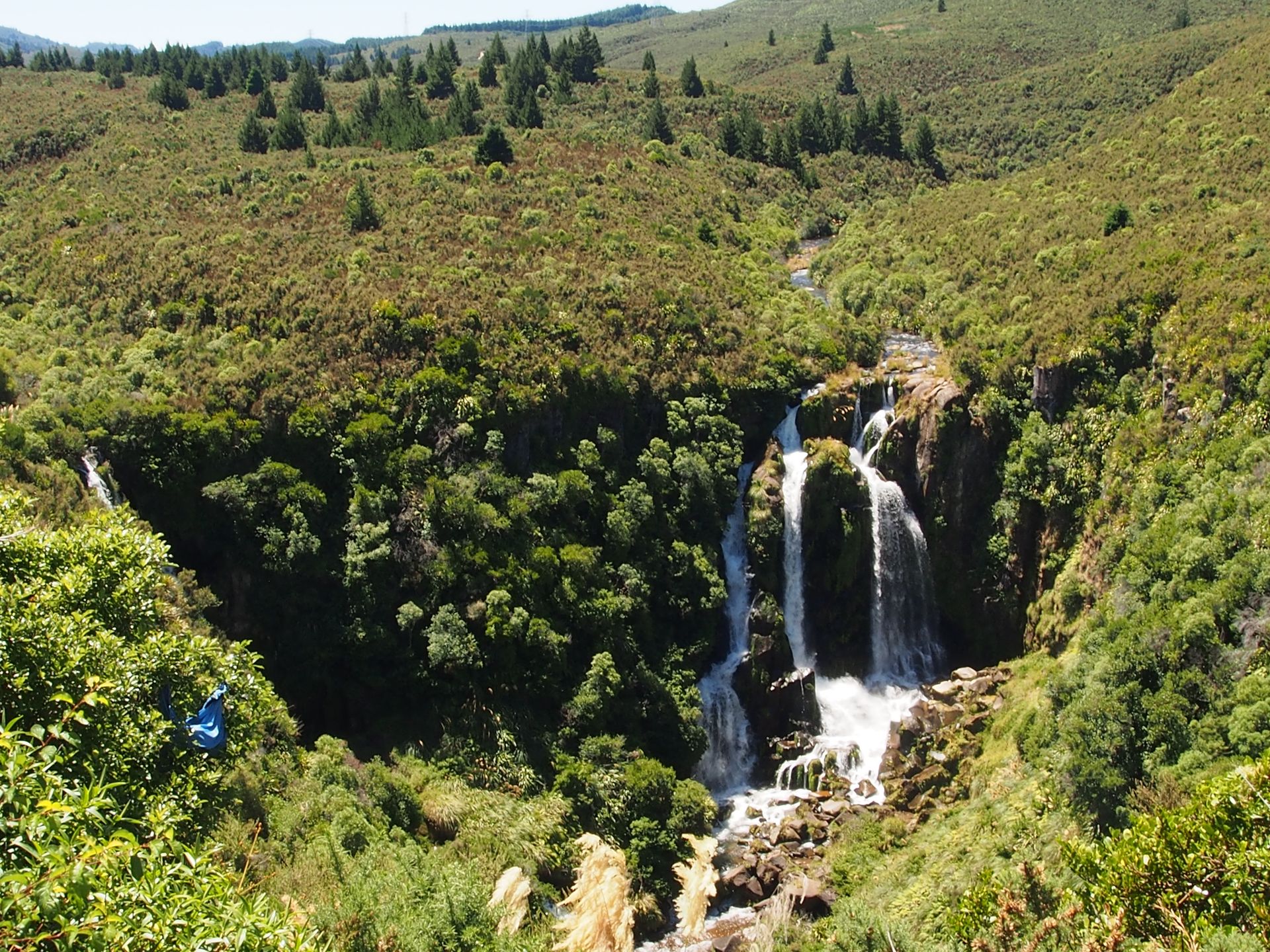
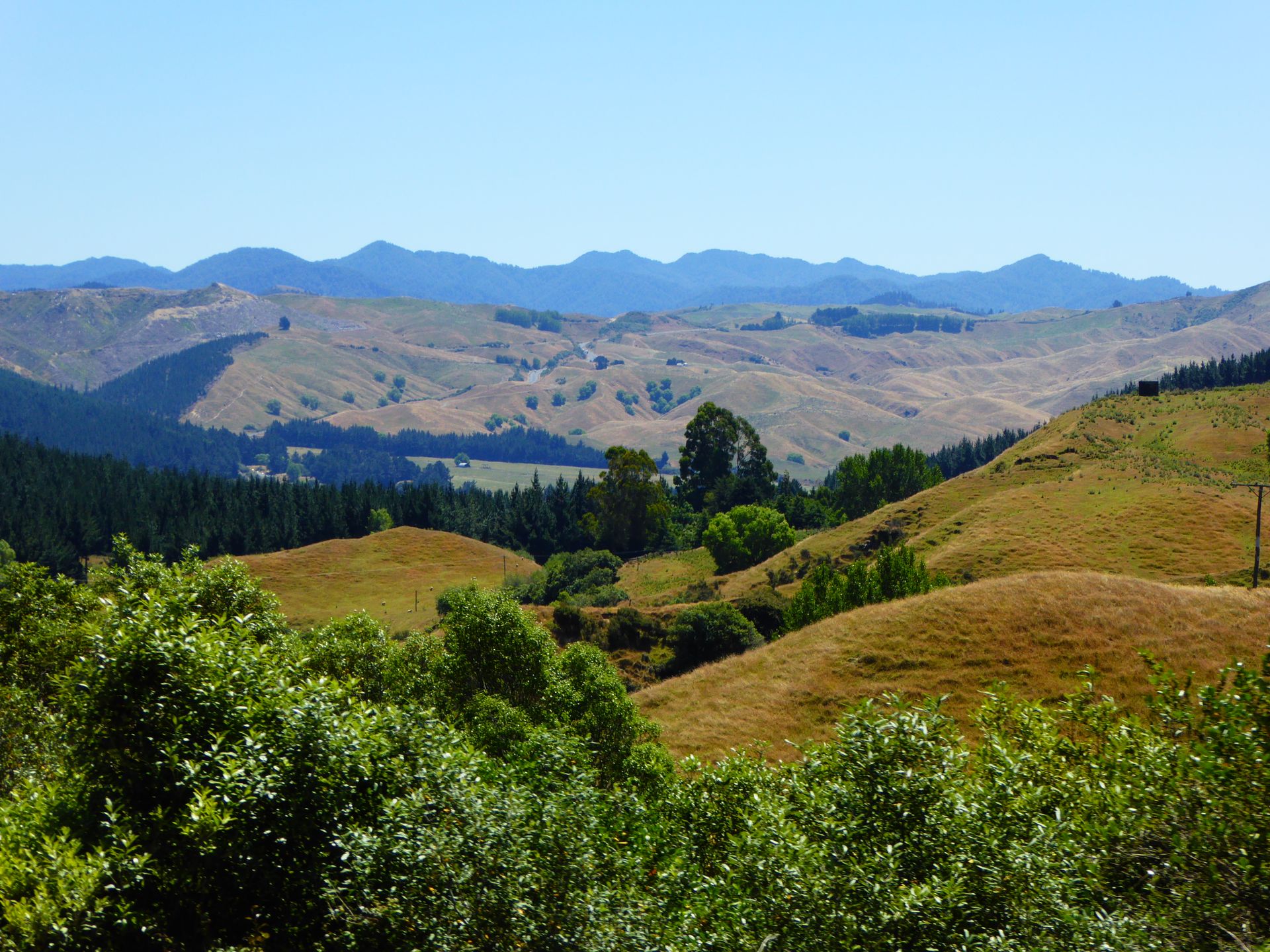
At the end of the road, the lake is below and I turn right and have a view of a huge bay with a lot of life. Of course, the lake is not as cold as the Pacific or the Tasman Sea.
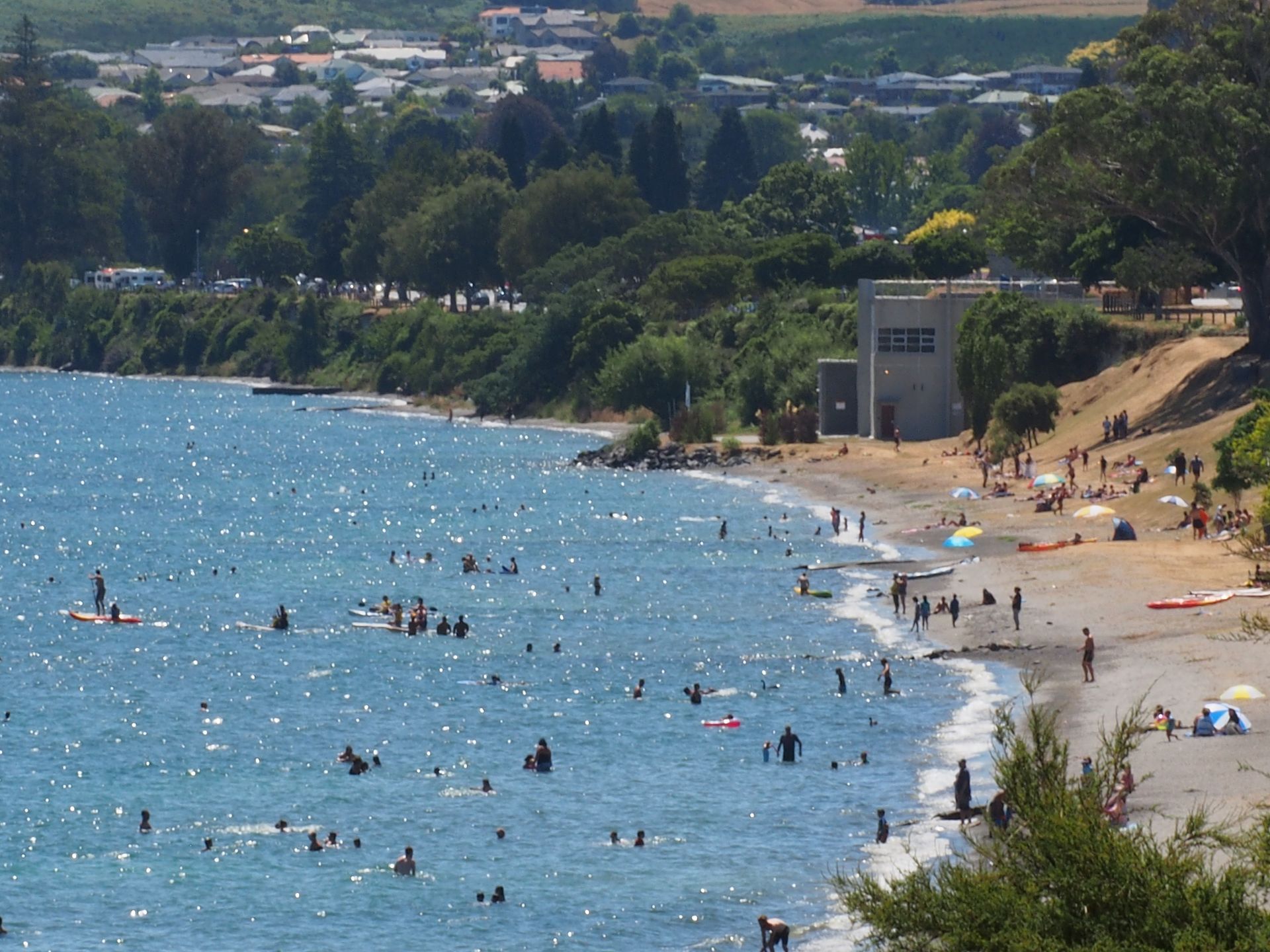
Here people sit in the water and - similar to Hahei Hot Beach on the Coromandel Peninsula where I was last year - you can dig shallow pits in the coarse beach sand and immediately feel the underground warmth, sit in it and be surrounded by the seawater.
Lake Taupo is 600 sqkm and a volcanic caldera. The Taupo volcano is one of the supervolcanoes whose eruptions caused months of darkness in large parts of the world affected by the ash fallout. Such eruptions often lead to extinction of species due to lack of food and light, often also water, to regenerate plant growth. The other supervolcanoes in the world are Yellowstone. When I was there 4 years ago, we practically drove from our arrival in Denver to Yellowstone on a high plateau at an altitude of 2,000m. This is the caldera of the Yellowstone volcano and Yellowstone National Park is still an active region. It's similar here. The largest eruption was about 25,000 years ago and even 100km away, there are 1.5m thick ash layers in the soil.
Scientists believe that another eruption will not happen anytime soon. The vents of the volcano are underwater in the lake.
I quickly found my motel and I am pleased that the room is so spacious. And that for $115 - compared to $130 for yesterday's, which was so outdated and really had furniture from the 70s with ancient wooden cabinets in the kitchen, whose doors were crooked and didn't close. It's good to have such a beautiful home in Taupo for $115. The room consists of two rooms, one with a large bed and kitchenette and dining table with three chairs, the other room with two narrower beds. Bathroom with the usual tin shower. But everything looks nice.
I walk down to the lake and it's really hot. Here you will find everything civilization needs and I get a large flat white at McDonald's and later a huge Coke Zero, as I now prefer cold drinks over warm ones.
Before I settle down with my book in the late afternoon sun, I walk past the Hole in One Challenge. Here you can try to hit a pontoon about 100m away from a golf tee, with three holes on it. If you hit the one in the middle, there is a $10,000 prize. A group of happy men are hitting balls here and a little later, as I sit on a bench a bit further away, the cheers are loud and the number of successful hole-in-one winners increases by one point.
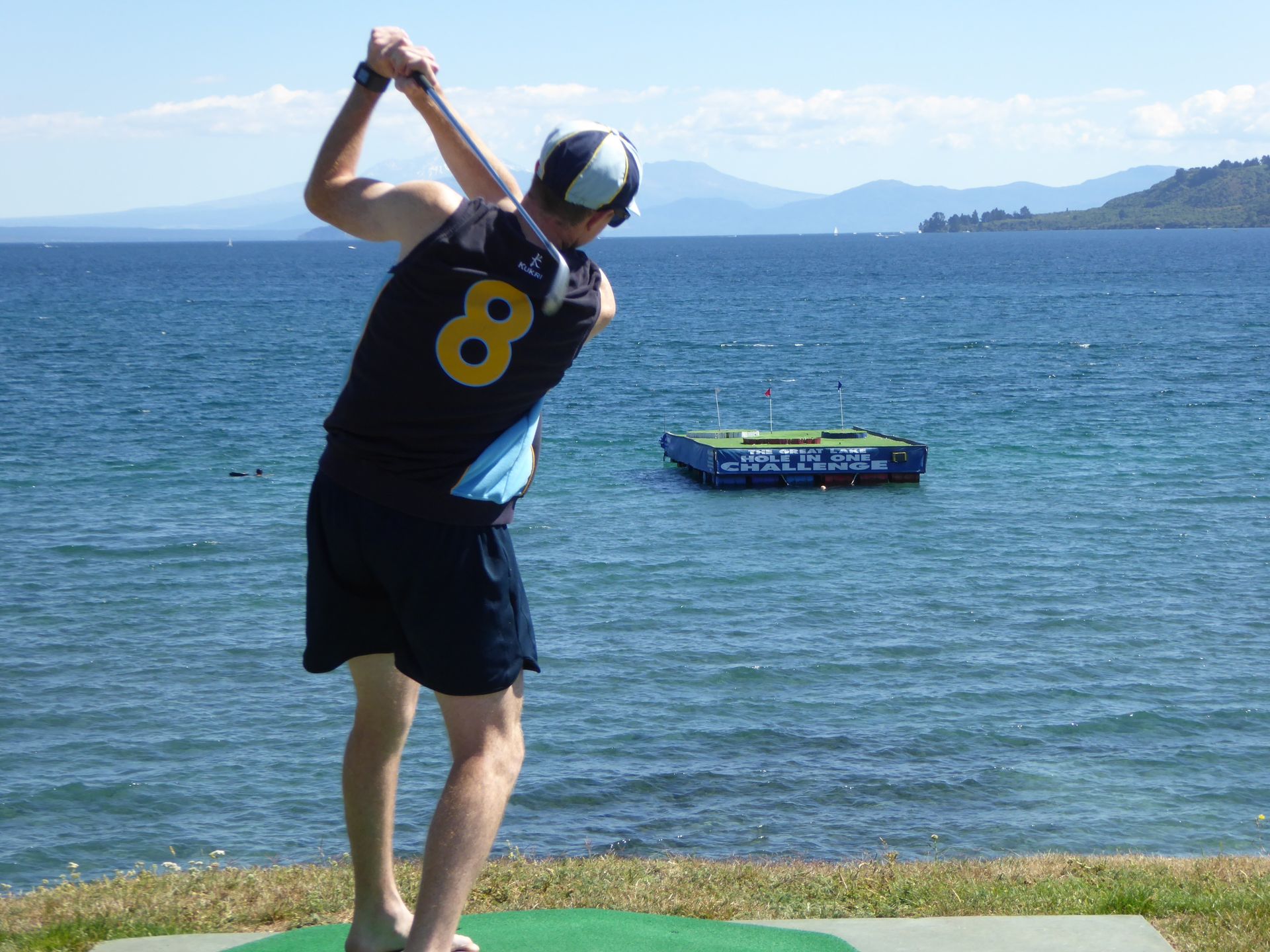
Behind the lake, you can clearly see the three peaks of the Tongariro National Park. Where I sat in the clouds at an altitude of over 2,000m about 4 weeks ago, it is sunny today. The view of the summit of Ruapehu with its 2,700m is unobstructed, even though it is 85 km away. In front of it, you can see the other two volcanoes that recently also emitted steam cheerfully. A great view - certainly also for the paragliders who are being towed over the lake here.
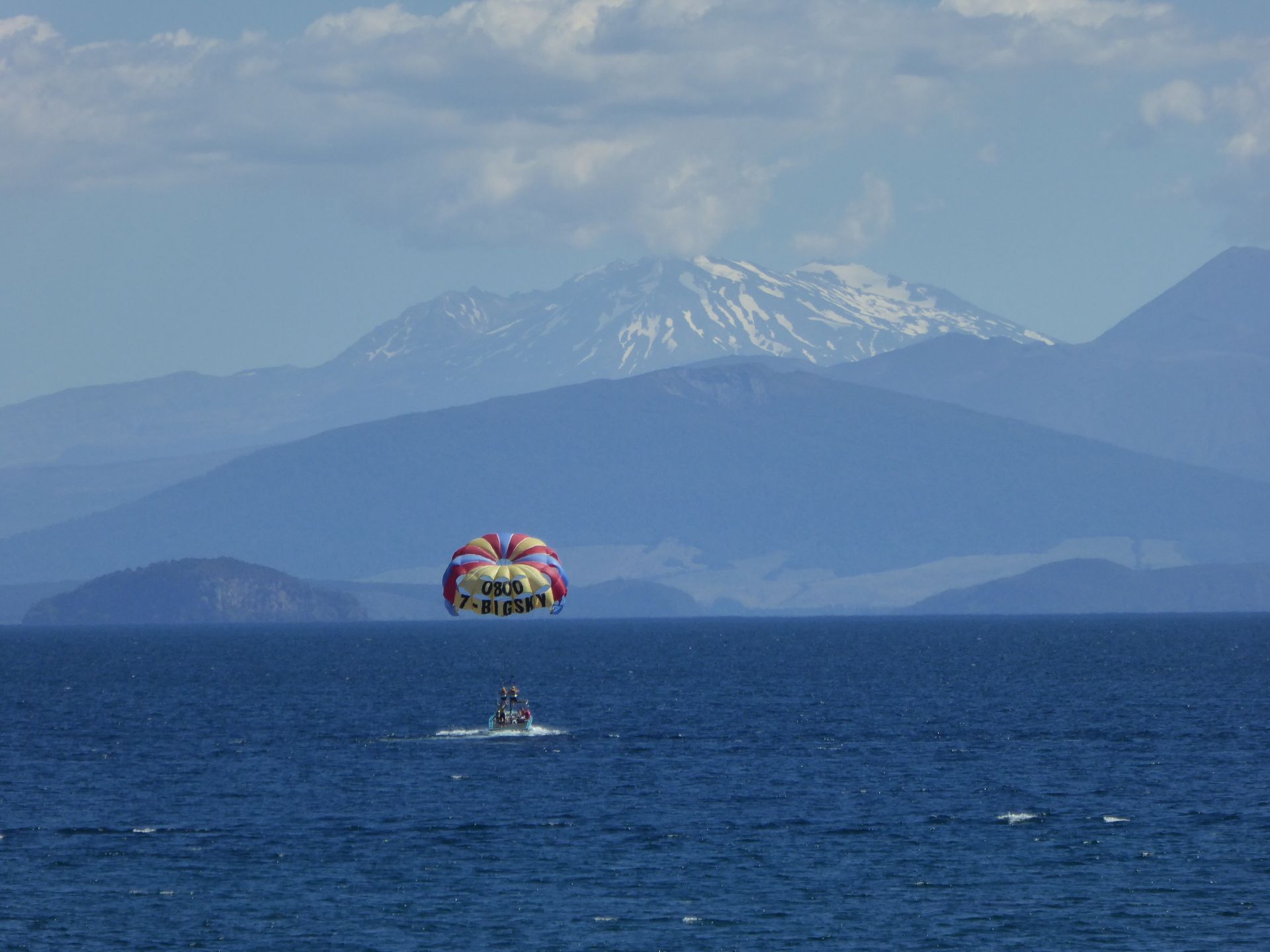
At half past six, I go to the Huka Falls again. The car park has been closed since 6:00 pm and I park in front of the barrier and walk to the small falls, which are more like a rapid where the otherwise wide Waikato River is squeezed together because it flows through a rock fissure of maybe 150m and thus becomes quite fast. In the end, it falls maybe 10m deep into its own riverbed. The Waikato is the longest river in New Zealand and the only one that originates from Lake Taupo, while there are almost 50 tributaries from the mountains. I take another walk to the long pipes that divert the geothermal conditions of the region to generate energy from them, but I can't get close because a access road is closed.
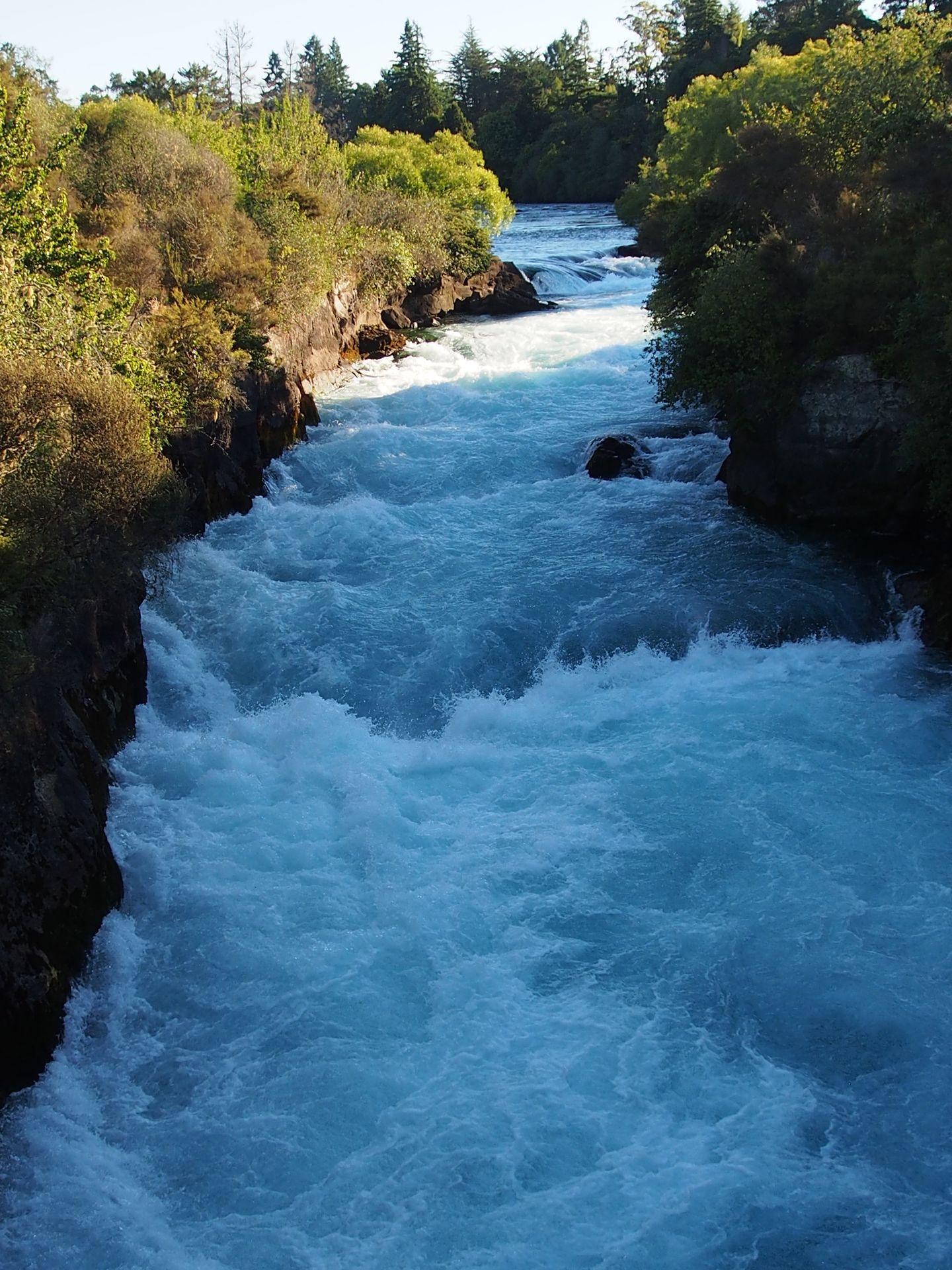
Huka Falls
Due to the fact that the sun is already lower, the lighting conditions for photos are not good. I have to come back tomorrow. Until sunset, I sit above Taupo at a lookout point and enjoy the view of the volcanoes, the lake, and the few clouds that dramatically change color with the sinking sun.
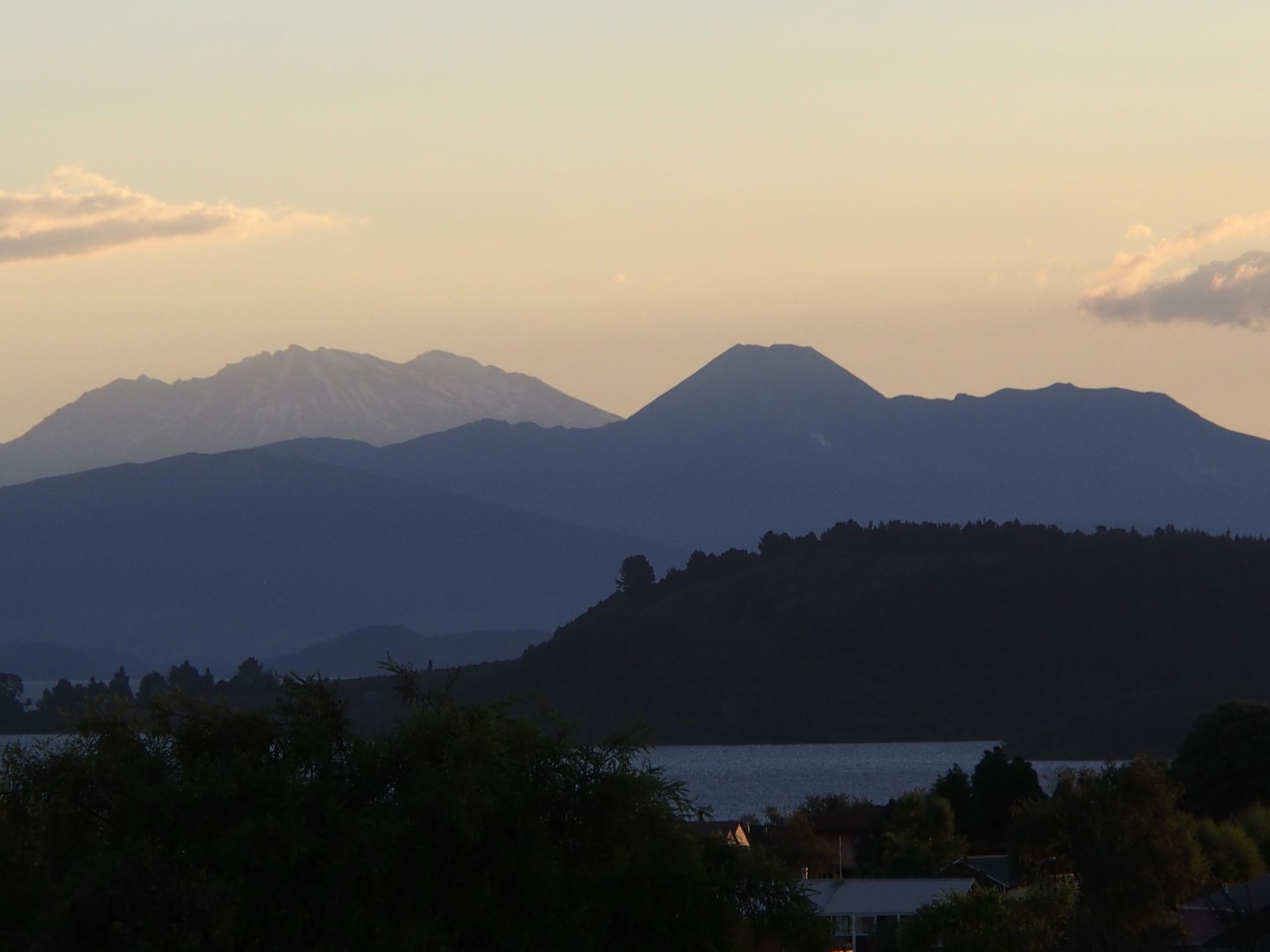
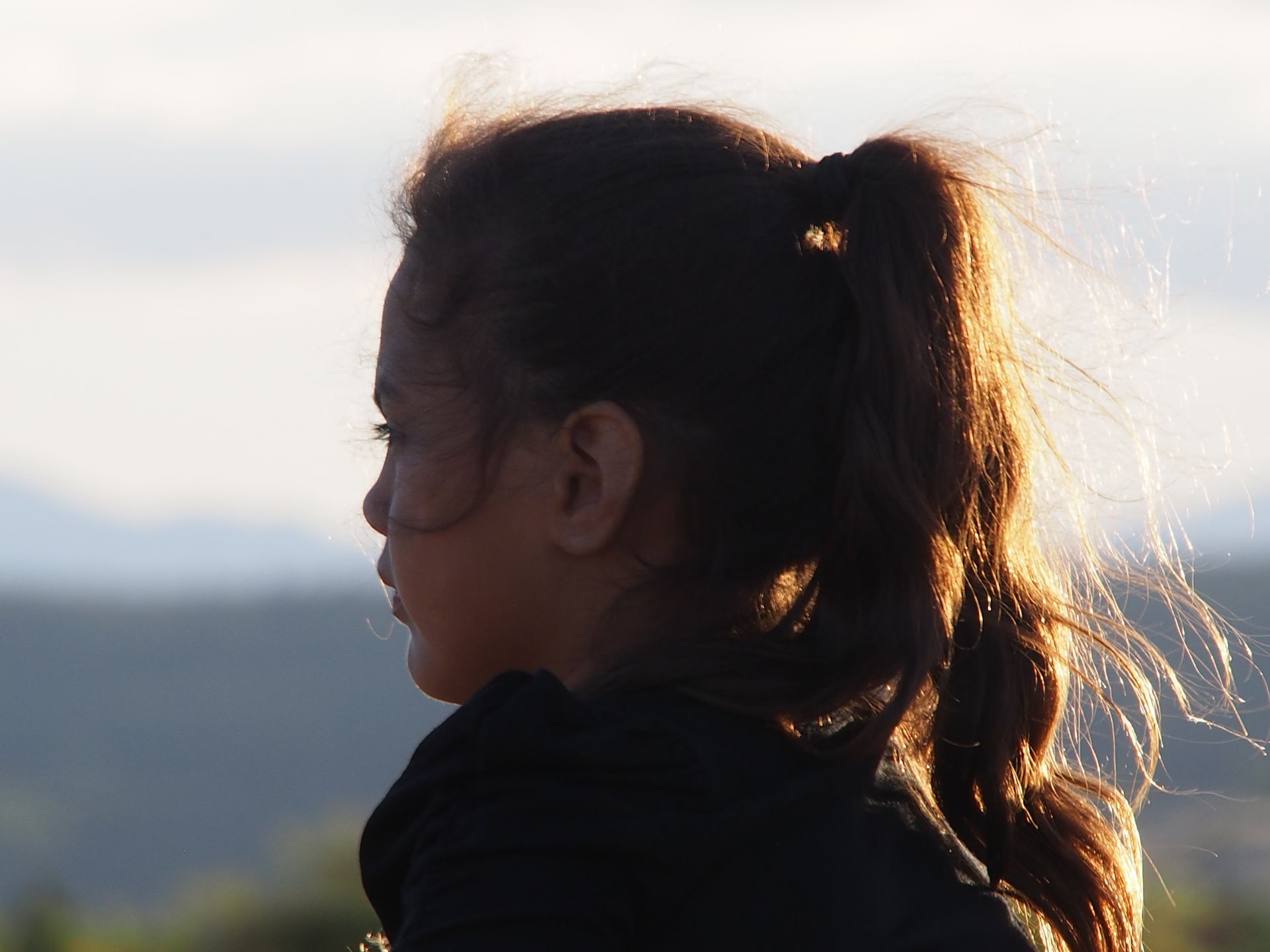
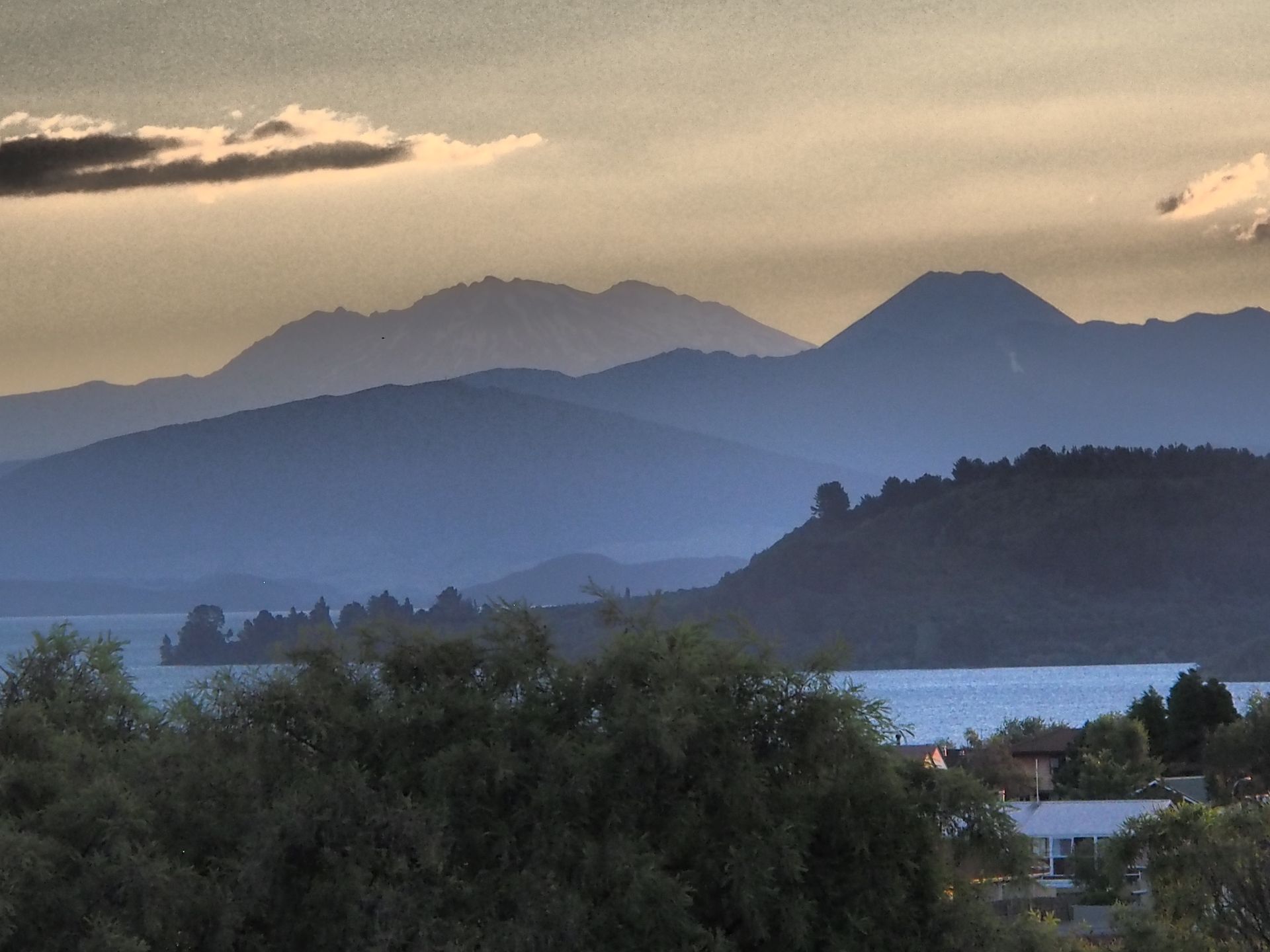
Here, the sun already sets before 9:00 pm. That's at least half an hour earlier than in the south of the South Island.
I get a salad, peppers, and two rolls at Countdown and have dinner at 9:30 pm in my accommodation. Beautiful day and the prospect of 2 more here is great.
Call home again and request the heating to be turned on. The return journey is getting closer and I can already see the weather forecast for my first day at home in Berlin.
Daily distance: 181 km
Abonējiet biļetenu
Atbilde

Ceļojumu pārskati Jaunzēlande

